MARKET OVERVIEW
The Global Construction Scaffolding market rests on the overall blueprint of construction-in-practice involving extensive scaffolding frameworks to enable construction activities at great heights along with safety, stability, and accessibility provisions. This market is about systems that help in assistance of laborers and machines at all stages of the construction process: maintenance, installation, and demolition. A part of this market consists of traditional tube and coupler scaffolding, modular systems, and innovative mobile units that will adapt as projects evolve and regulatory conditions change.
The areas will continue to be residential and commercial developments, which construction scaffolding will serve. The Global Construction Scaffolding market will be one of the critical building blocks while constructing high-rise buildings, bridges, industrial complexes, and public infrastructures. Because as urban development goes forward and space gets constricted, an adaptive load-bearing structure forms legit workspaces to enable narrow, vertical, and irregular-shaped work areas that meet scaffolding requirements. In the future, engineering teams will depend upon scaffolding for the construction process not only as a support mechanism but also as part of the logistics and safety strategy across sites.
Innovations in scaffolding materials and designs will be the defining aspect to shaping the Global Construction Scaffolding market. The traditional steel and aluminum systems, since their strength and durability, will continue to be used along with the newer lightweight alloys and composites, which will reduce the time of handling and transportation. These systems will be engineered for rapid assembly and disassembly without compromising structural integrity. The influence of automation and digital monitoring is expected to guide how scaffolding performance will be tracked on-site toward helping supervisors identify stress points, which help prevent structural failures emergently.
It will keep the market in sync with project-specific requirements of customized solutions. Scaffolding systems would have to fit into non-linear geometries and support tools or materials in the difficult-to-reach areas for complicated architectural projects. Beyond sites will also have extremely specialized temporary support structures for painting, welding, façade treatment, and other concurrent operations. A hallmark feature of the industry service offerings, therefore, in the future will be the extent of configuration tailoring without loss of time.
Safety compliance shall define the standards that will constitute the Global Construction Scaffolding market. Innovative locking mechanisms, guard rails, and load-distribution systems derived from regional building codes and international labor safety regulations will be the normal. Consequent construction activity countries maintain strict best practice enforcement regimes, thus impelling manufacturers or service providers to comply with such regulations updating their safety specifications.
Global Construction Scaffolding market is estimated to reach $69,731.86 Million by 2032; growing at a CAGR of 4.3% from 2025 to 2032.
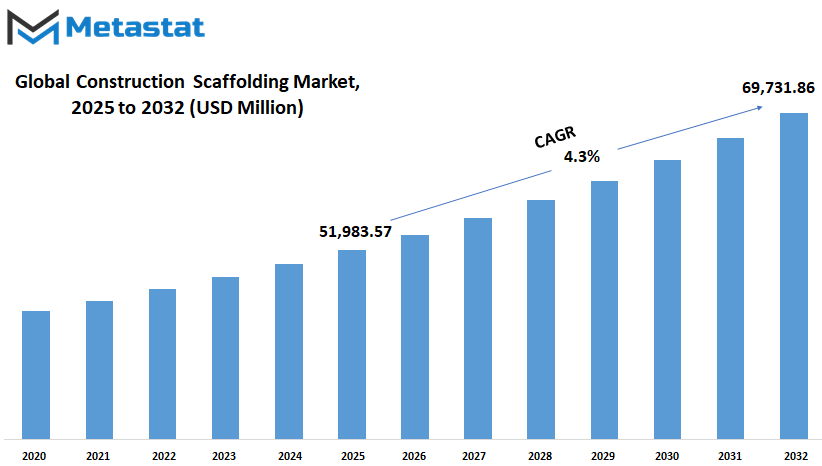
GROWTH FACTORS
There are huge transformations pending in the Global Construction Scaffolding market which are being fuelled largely through the overall changes in the manner in which the cities stretch, and buildings are designed. More people are moving into cities, and the demands are insatiable-new homes, office buildings, transportation systems, and public facilities. Such demand is continually driving construction activities; scaffolding holds a very important perspective in that process since it offers temporary support structures to ensure the safe and effective task completion of the worker at heights. This is very critical when they are erecting tall, complex buildings.
Rapid urban growth can be noticed in many developing countries, forcing the construction industry to increase its pace to meet rising expectations. The cities are stretching upward and outward, which, in turn, leads to the construction of high-rise buildings and unique architectural designs that oftentimes require scaffolding systems that could support advanced engineering methods. Hence the requirement increased naturally for scaffolding equipment and augmenting the market as developers look for reliable solutions to meet safety standards and construction timelines.
But certain constraints continue posing threats to growth. Cost fluctuation in two of the major raw materials used in the manufacture of scaffolds-steel and aluminum-is one serious issue. It increases the cost of production whenever there are wild swings in the prices and, as a consequence, elevates the cost factor associated with projects. Some construction firms may delay or cut back on spending for scaffolding systems. Another point of concern is worker safety. Poor scaffolding installations lead to accidents that endanger lives, hurt the construction companies' images, and have very expensive legal implications.
The future looks promising even in this situation. Builders and contractors are very enthusiastic about such modular and lightweight scaffolding systems. Such newer systems are easy to transport, quick to assemble, and safe, thus resulting in better efficiency at worksites and allowing workers stronger protection. With increasing tightening of safety regulations and a growing emphasis of companies on sustainable building methods, the industry is likely to shift towards systems complying with higher safety and environmental standards.
Innovation in scaffolding technology and design is likely to bring new opportunities to the Global Construction Scaffolding market in the years to come. A continuing interest in infrastructure with increased concentrations on planning for smart cities leaves scaffolding as a significant instrument in the construction industry. Companies that maintain the edge of these changes and invest in safer and smarter solution provision would, therefore, see some steady future growth.
MARKET SEGMENTATION
By Type
Even though the Global Construction Scaffolding market is expected to grow largely with the same line of demand-it will always keep evolving as one grows increasingly safe and efficient into more ways to support constructions all over the world. It will grow on the need for scaffolding systems as infrastructure projects continue increasing and urban areas expand. Construction companies always have a raw desire to improve safety, reduce labor efforts, and speed up work while at the same time never compromising the strength or stability of the structures they build. This is where scaffolding plays a vital role- as a temporary structure supporting the workers and the material in constructing, repairing, or maintaining buildings.
One major thing about all scaffolding types is the different uses and advantages. Frame scaffold, for example, is much into use because it is easy to erect and the best scaffolding type for general building work. This basic design allows rapid movement, unlike tube and clamp scaffolding, which allows adjustments to the site shape and enables alterations for workers to create irregular shapes or scaffolding around obstacles while giving them options for adapting the construction to remedial projects.
Ringlock scaffolding is another popular choice. It is well known for its excellent locking. The increased safety features also permit a more efficient assembly and dismantling procedure. This system is frequently used for large projects because time and safety are always at a premium. With cuplock scaffolding, however, great load and stability are outshined. It is purposely made for projects where greater supporting strength is needed, for instance, bridges and high-rise buildings.
Towards the future, the Global Construction Scaffolding market is likely to get newer developments on materials and design. Innovative technologies may force their way into this segment in the coming years, making scaffolding systems from lighter but stronger metals, easier connection and even smart technology components that would enable future scaffolding systems. These changes will make workers do their work even more efficiently but safely. More investments in infrastructure coupled with more emphasis on worker safety will increase the demand for even higher quality scaffolding solutions. In upward and outward building, scaffolding will remain an important part of that progress within that critical infrastructure development.
By Offering
The Global Construction Scaffolding market will steadily see growth in response to the construction industry's shift toward more advanced, safer, and cost-effective building practices. With the planning of new structures and the repairing or renovation of existing ones, the need for strong, balanced support systems is ever more apparent. Scaffolding plays an important role in this; it gives workers safe access to very high points while also supporting materials during building processes. An item of support, of course, but it forms an integral part of the site environment that ensures smooth progress with minimum accidents.
Looking ahead, an upturn in demand is expected from ongoing infrastructure projects, urbanization, and a greater focus on safety standards and regulations. In the developing world, rising populations and expansion in building residential and commercial structures will keep demand firm. On the other hand, more developed regions concentrate on upgrading existing structures. All these elements create a continuous cycle of demands that keep scaffolding alive.
On the provision side, the Global Construction Scaffolding market is segmented into two main domains: Scaffolding Products and Rental Solutions. Scaffolding Products include a multitude of tools and systems depending on various types of construction jobs and could range from modular systems to basic pipe and fittings set to support a myriad of task types. With advancements in technology, these products are expected to become lighter, more easily assembled, and safer. There is also a trend in moving towards lighter yet stronger materials, which could drive down labor costs while enhancing transportation and storage capabilities.
For even more flexibility, on the other hand, Rental Solutions are rapidly emerging as the preferred solution since contractors are opting to rent scaffolding equipment as needed, rather than purchasing it for permanency. This presents an economically practical alternative for short-term projects in addition to companies with fluctuating requirements. Rentals also enable access to state-of-the-art equipment without the hassle of maintenance or storage, especially useful for smaller firms or those working on various sites.
Digital instruments for tracking safety and efficiency and through use will reshape the entire future of both goods and rental services. The Global Construction Scaffolding market will not only be reactive to these new demands but will in turn help shape the construction industry's own direction. As the construction industry evolves, so will the very tools that facilitate that change.
By Application
The Global Construction Scaffolding market witnesses some changes with the growth of industries and the rise of new projects in different sectors. Scaffolding will remain an integral part of how buildings come together, as cities grow, and infrastructure demands increase. Scaffolding is one of the unsung tools helping workers reach unsafe heights or difficult spots. Whether a tall office building or a small house, scaffolding makes work a lot easier and much safer for the people involved.
Looking ahead, various applications will further influence the market. Within the realm of residential construction is perhaps the greatest push for affordable housing in urban settings: anywhere more homes are needed; construction work will grow. This implies that scaffolding will become an even greater player in speeding up the home completion process efficiently. Strength in design and construction is sought by companies for commercial projects like malls and office space. Scaffolding is no longer used for safety purposes only but also allows flexibility within the construction process.
Another factor that keeps the growth of this market in balance is the industrial sector. As equipment is needed in factories and warehouses, there is demand for heavy-duty scaffolding to sustain complicated work at varying heights. Safety standards have really been becoming stricter, and scaffolding helps provide the means to meet these standards. Within oil and gas, scaffolding takes on a more significant role. Such projects are usually found in unfavorable weather conditions, needing a strong and sound support system that helps workers carry out inspections, maintenance, or repairs. Well-built scaffolding structures are also, therefore, a must since even minor mistakes can raise serious concerns.
An unexpected but growing application of the Global Construction Scaffolding market is events. Festivals and other large-scale public gathering events must erect temporary platforms, stages, and viewing areas. Scaffolding systems provide the rapid and safe assembly of these structures. Such applications will likely increase with more cities hosting major public events.
While doing so, technologies are developing together with new materials and smarter designs. Companies might focus on lighter but stronger materials and apply tracking devices quantifying safety and progress on-site. This would mean not only safer construction sites, but timely completion of projects. Henceforth, therefore, for the foreseeable future, scaffolding shall play a major part in construction throughout a number of sectors.
|
Forecast Period |
2025-2032 |
|
Market Size in 2025 |
$51,983.57 million |
|
Market Size by 2032 |
$69,731.86 Million |
|
Growth Rate from 2025 to 2032 |
4.3% |
|
Base Year |
2024 |
|
Regions Covered |
North America, Europe, Asia-Pacific, South America, Middle East & Africa |
REGIONAL ANALYSIS
The Global Construction Scaffolding market is steadily moving toward a future shaped by innovation, safety improvements, and shifting construction practices. The demand for infrastructure development has been kept on rising, and so increased needs for reliable scaffolding systems would grow in several parts around the world. Observing the spread of the market across geography gives an idea of how various regions are supposed to contribute to this progress. Each would be possessing its own advantages and disadvantages, but there would be collective contributions toward future construction support systems development.
North America will continue to see steady demand primarily from renovation contracting and strict safety standards. Aging infrastructure in countries such as the U.S. and Canada requires frequent repairs, entailing scaffolding provision for safe and efficient work environments. Meanwhile, Mexico is slowly switching to modern construction practices, thereby increasing the need for modern scaffolding systems. With the increased focus on workers' safety and sustainable building practices, North America shall remain stable and gradually growing market areas.
Europe too would be a steady contributor in the Global Construction Scaffolding market. The countries such as Germany, UK and France have large, matured construction industries and with the government push on energy-efficient buildings, scaffolding formations have been playing critical roles. With increasing construction or renovation of buildings to meet environmental standards, the demand for advanced scaffolding materials will go on multiplying.
Asia-Pacific is considered as a region that would contribute significantly to the future in terms of growth. Rapid urbanization in nations such as India and China mean that potential buildings, bridges or roads are being planned or constructed at any point in time. Such projects had sustainable access; scaffolding provides that amenity to that accessibility. Hence, as built-up areas expand and the urge for even more high-rise structures become a reality, the demand within this space will continue to rise. Then, Japan and South Korea known for their technological advancements will also be major contributors for scaffolding systems being formed.
South America is opening up. Nations like Brazil and Argentina lay strong emphasis on infrastructure, especially in transport and housing. Growth might be gradual, but better construction workplace safety even among individuals will drive demand for scaffolding. Finally, in the Middle East and Africa, countries like the UAE, Egypt, and South Africa are pouring a considerable amount of money into building mega structures. These mega structures, among other things, entail smart cities and transport hubs, requiring strong scaffolding systems; hence, this region contributes highly in the future.
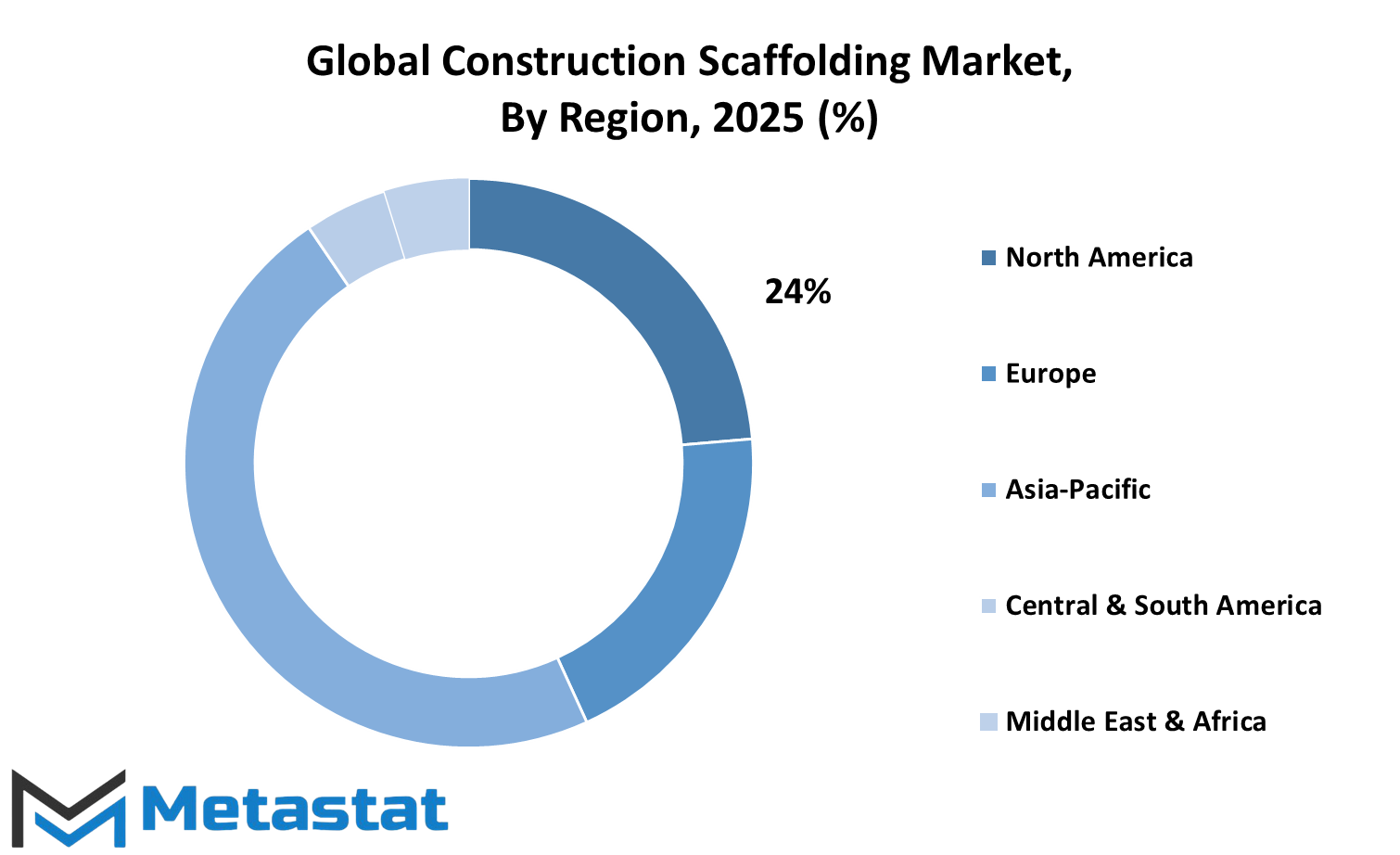
COMPETITIVE PLAYERS
The Global Construction Scaffolding market is poised for rapid growth owing to contemporary set-up needs, ongoing safety developments, and its rising demands for the efficient execution of a project. With construction activities on the rise, scaffolding solution providers must brace themselves for tougher battles and higher expectations. The future might not just witness greater numbers of scaffolding projects, but also an improved adaptability of the scaffolding systems to match the variable requirements of construction sites. The fast movers that focus on reliability, innovation, and user safety will forge ahead in this area.
Already, many of the companies are closely involved in the market's looming future. Wilhelm Layher GmbH & Co KG stands out not only for their significant presence but also for a long tradition in scaffolding systems usually accepted as safe and flexible. PERI GmbH and Doka GmbH have earned their reputation by developing formwork and scaffolding solutions for the large-scale projects' demands. The continued improvement of their products will include new materials and set-up techniques that offer construction teams the advantages of time without compromise.
Brand Safway and ALTRAD Baumann are other names that would probably lead in service alongside product quality. They might augment their rental fleet, create modular systems, or dive into digital gadgets monitoring on-site scaffolding performance. With the anticipated acceptance of intelligent fabrication systems, these brands might give serious thought to hybridization of physical support systems with technologies that govern safe working and monitor progress.
Firms like ADTO Inc., MJ-Gerust GmbH, and Ozler Formwork and Scaffolding AS would steadily make their presence felt on the global arena because they have an answer for localized as well as foreign requirements. By providing customized regional solutions and developing supply chains, they will influence the regional outlooks on the use of scaffolding. Newer players like World Scaffolding Co., Ltd and Yagmur Scaffolding Systems have a chance to make advances if they can find a way to continue meeting the industry standards while keeping their products reasonably priced and adaptable.
Overall, the Global Construction Scaffolding market may be in for a phase of increasing competition and increasing innovation. With so many players involved, the pressure of providing stronger, safer, and more user-friendly scaffolding systems would act as a driving force forward for the whole industry in the years to come. The players who listen to the needs of construction workers and project managers while remaining flexible with their designs will find themselves being praised in the coming years.
Construction Scaffolding Market Key Segments:
By Type
- Frame Scaffolding
- Tube and Clamp Scaffolding
- Ringlock Scaffolding
- Cuplock Scaffolding
By Offering
- Scaffolding Products
- Rental Solutions
By Application
- Residential Building
- Commercial Building
- Industrial
- Oil and Gas
- Events
Key Global Construction Scaffolding Industry Players
- Wilhelm Layher GmbH & Co KG
- Doka GmbH
- ADTO Inc
- ALTRAD Baumann
- Atlantic Pacific Equipment LLC
- Brand Safway
- Catari Industria SA
- MJ-Gerust GmbH
- Ozler Formworkand Scaffolding AS
- PERI GmbH
- ULMA C y E, S.Coop.
- Urtim Kalip and Iskele Sistemleri San and Tic Inc
- World Scaffolding Co., Ltd
- Yagmur Scaffolding Systems
WHAT REPORT PROVIDES
- Full in-depth analysis of the parent Industry
- Important changes in market and its dynamics
- Segmentation details of the market
- Former, on-going, and projected market analysis in terms of volume and value
- Assessment of niche industry developments
- Market share analysis
- Key strategies of major players
- Emerging segments and regional growth potential



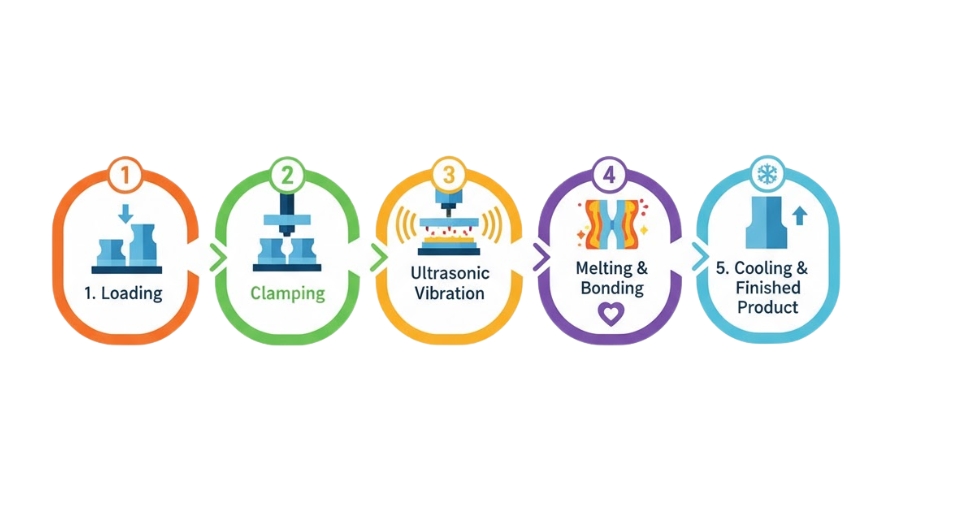
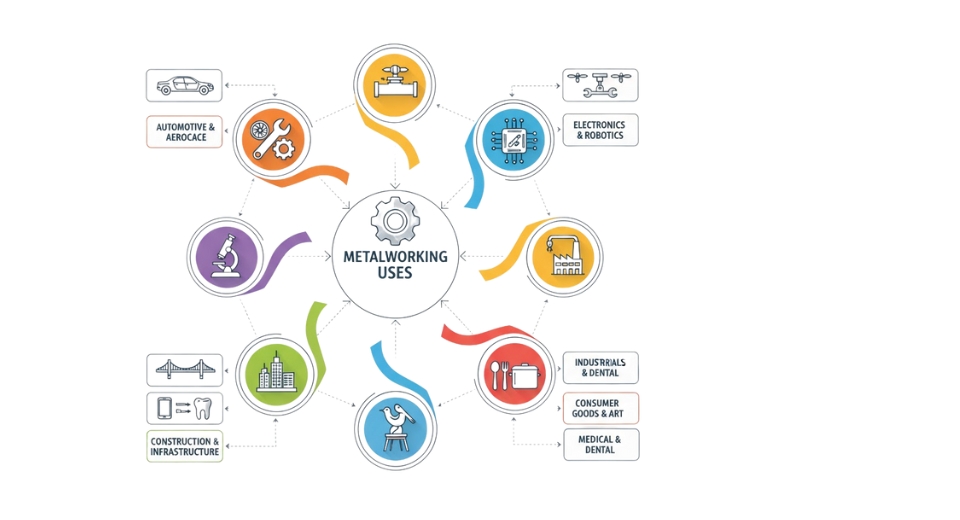
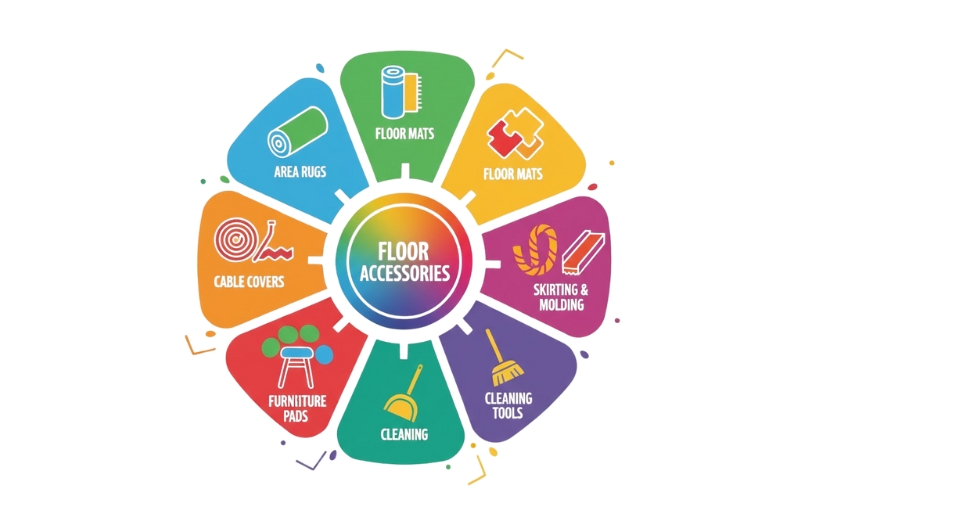
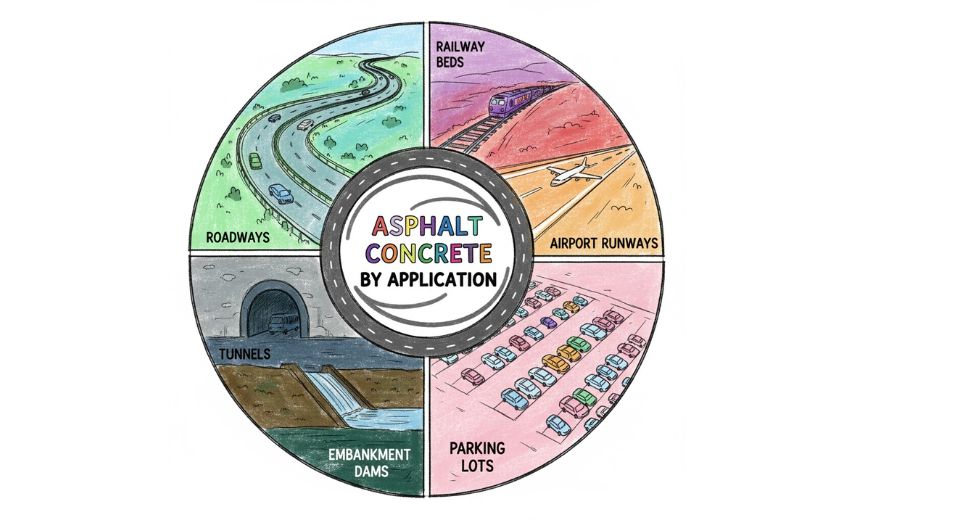

 US: +1 3023308252
US: +1 3023308252






